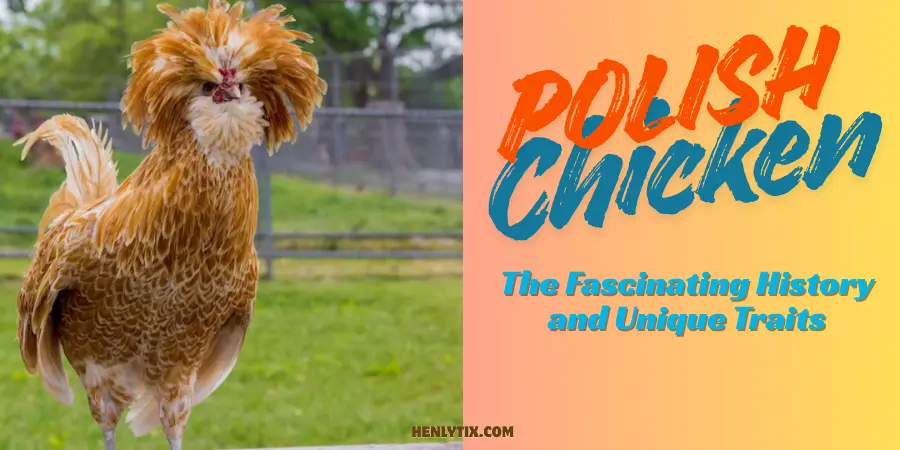Polish chickens are quirky, hilarious, and fun birds, making them a favorite among poultry enthusiasts for years. These chickens are not just another breed; their distinct personality and characteristics make them stand out. Their beautiful crest of feathers on the head adds to their charm, and they are an absolute joy to watch.
Although their origin is somewhat unknown, Polish chicken are believed to have originated in Eastern Europe, possibly brought to Holland from Spain during the 16th century.
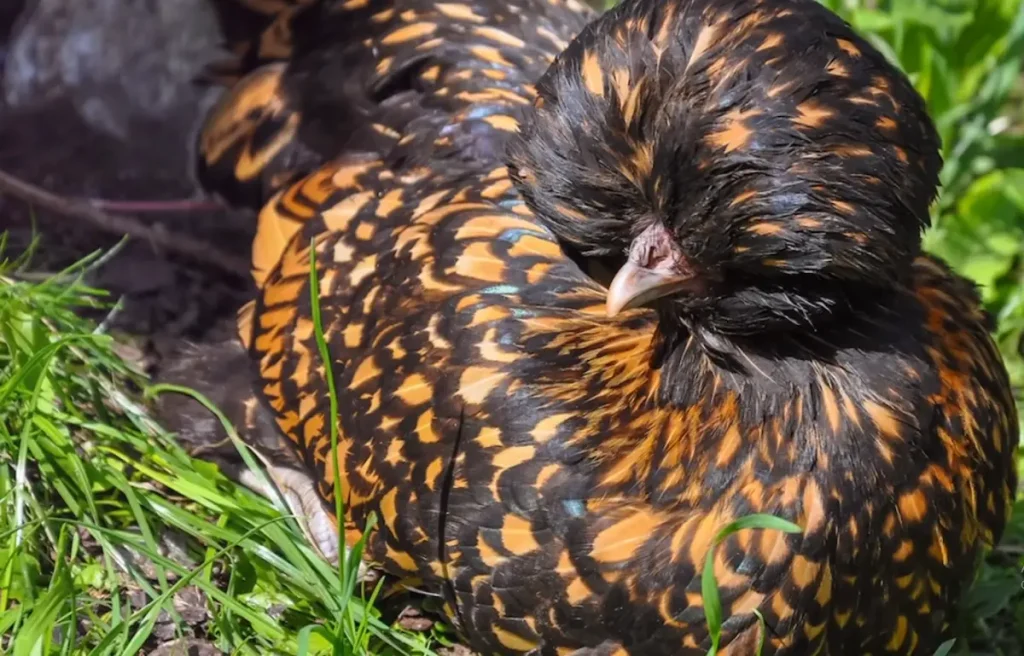
Poultry historians suggest that Polish chickens were likely descendants of birds from Central Europe, brought there during the Middle Ages by Asian Mongols. Their ancestors traveled across Europe, refined by Dutch fanciers in the eighteenth century.
Polish Chicken-Short Explanation
Polish chickens are ornamental birds known for their distinctive feathered crest and quirky personalities. While they are decent egg-layers, they are more admired for their unique appearance and gentle nature. These social, active, and good flyers are popular in exhibitions, but they are not typically raised for meat production.
The Fascination and Popularity of Polish Chickens
These chickens are as much a piece of art as they are a bird, with their magnificent feathers and regal crest standing as symbols of distinction. Old paintings and works by Italian artists from the 16th century have immortalized these quirky birds, who even appear in literature of the period. Their unique look, with feathers resembling Polish military hats, has made them a subject of captivation and awe.

Polish chickens have been bred not only as egg producers but also as a show bird, admired for their unusual and beautiful feathers. Their health and features make them an ideal choice for exhibitions. By the mid-1800s, they had become popular in the U.S., especially in the realm of poultry shows, where their magnificent feathered crest and unique personality earned them high praise.
Polish Chickens: A Living Work of Art

The Polish chicken is truly a living work of art, capturing the imagination of anyone who encounters it. Its aura and striking crest of feathers elevate it from a simple poultry breed to a captivating part of any flock. Whether as pets or as a show bird, they are a joy to enjoy and explore.
These chickens are not just part of the history but are a remarkable representation of both art and poultry, often seen as a beautiful addition to any collection. Their unique personality, combined with their distinct characteristics, makes them a favorite for poultry lovers, and they continue to shine across various facets of the poultry world.
A Glimpse into the Rich History and Origins
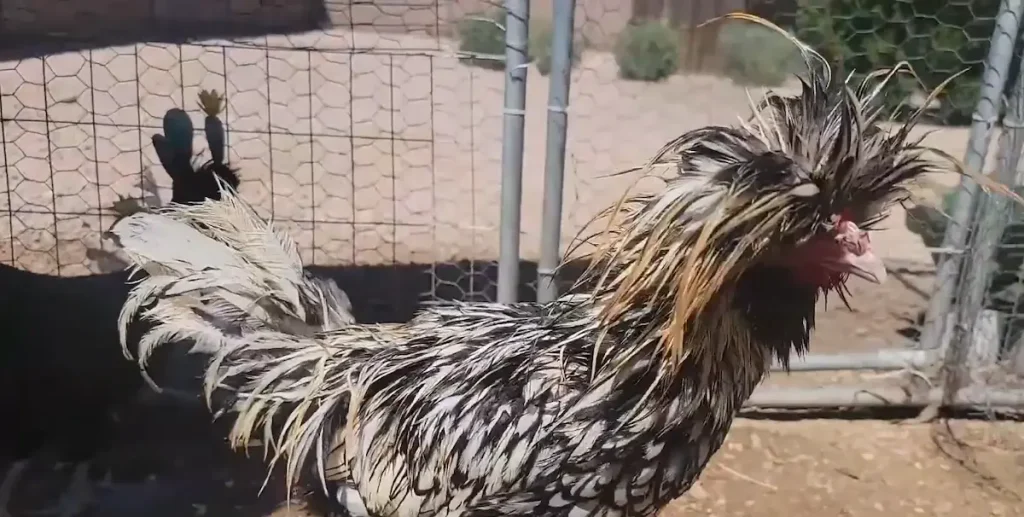
The Polish chicken breed has a fascinating and somewhat mysterious history. While its origins remain unclear, it is believed that the breed first appeared in Eastern Europe, possibly Poland or the Netherlands. In the 1700s, the Polish chicken was introduced to England, where its distinctive appearance and beautiful crest of feathers made it stand out.
Known for their unique head, they have a striking crest that resembles the Polish soldiers’ feathered caps, which was likely the inspiration for the name. This bird was primarily bred for ornamental purposes rather than for egg or meat production due to its distinct appearance.
The Polish chicken has been called several names, such as Tophat, Padua, or Poland. Charles Darwin classified chickens with crests as Crested chickens, referring to their feathering on the head. The Silver Laced variety, with its black and silver lacing, has an especially striking appearance, resembling an Elvis Presley style due to its round poof of feathers.
Its round body and unique personality make the Polish chicken a favorite among poultry lovers. Its ornamental qualities and silliest traits, such as the Queenie chicken that I once owned, continue to captivate poultry enthusiasts worldwide. The Dutch word “Pol” meaning large head is another theory behind the name, describing the bird’s feathers and sprouting crests.
Introduction to Polish Chickens in Different Regions
The Polish chicken made its way across different regions over the years, with its history tracing back to England in the 1700s. By the time it reached America around 1830, it quickly became popular for egg production. However, the rise of other breeds like Leghorn chickens in England and America by the 1850s led to a decline in its egg production.
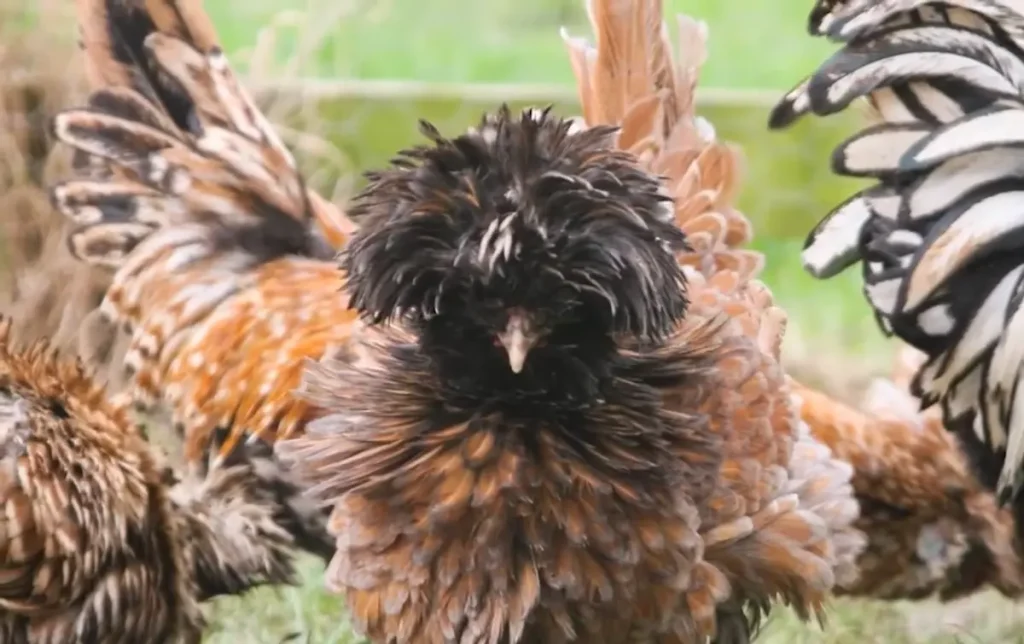
By the 1890s, the Polish chicken was no longer favored for its productivity, yet it remained widely widespread and was primarily maintained for exhibition purposes. Despite the breed’s fall from grace in egg production, its charm and popularity in the show world helped it continue to thrive, with its widespread presence lasting until the mid-1800s.
Recognition of Polish Chickens in the American Poultry Association
The Polish chickens have gained recognition in the American Poultry Association since the inclusion of various varieties in their Standard of Perfection in 1874. Initially, the white crested black, golden, silver, and white varieties were acknowledged, but as time passed, more breeds like Bearded Golden, Bearded Silver, and Bearded White were added in 1883.
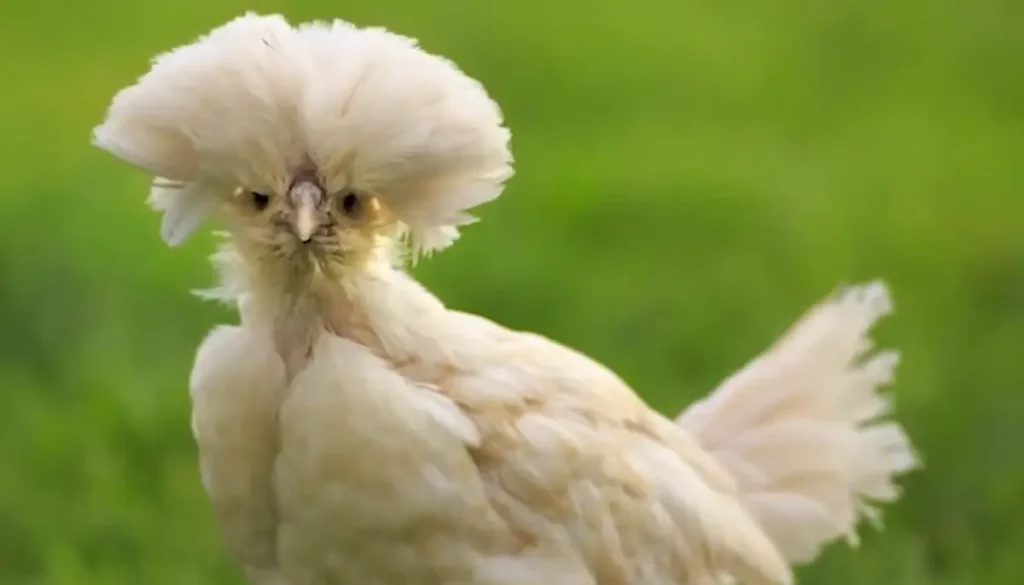
In the following decades, other non-bearded varieties such as the Non-Bearded Buff Laced in 1938 and Non-Bearded White Crested Blue in 1963 were also recognized. The addition of the Bearded Buff Laced in 1883 further contributed to the breed’s popularity in exhibitions.
Over the years, these additions helped Polish chickens maintain their place in the exhibition world, gaining admiration and attention in poultry circles.
Physical Characteristics of Polish Chickens
Polish Chicken Appearance: Male and Female Features
The Polish chicken has distinct features that make it stand out. Males have a v-shaped comb that may be partially hidden by their head feathers, giving them a unique look. They also have red wattles and white earlobes. Males typically have large nostrils, adding to their striking appearance.
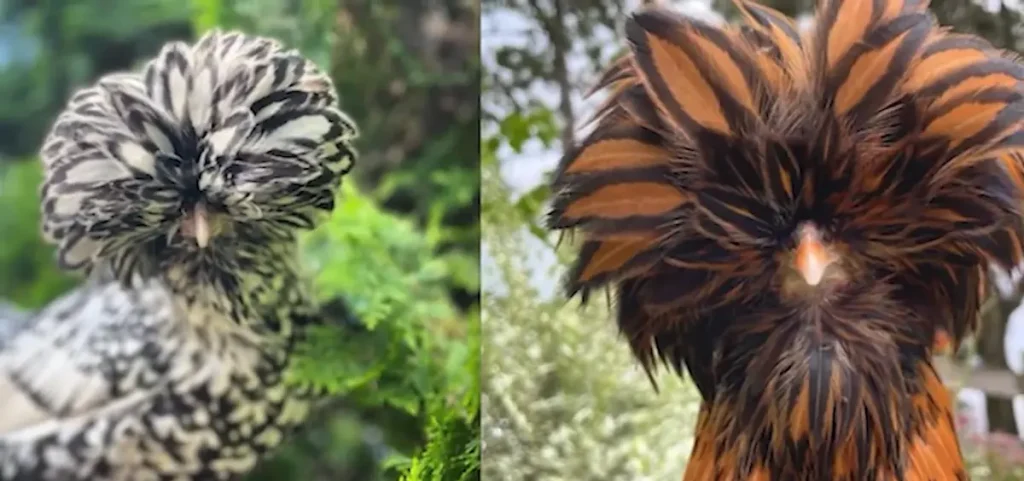
Their legs are gray, and unlike some other chickens, they have no feathering on their legs, which is quite noticeable. Polish chickens also have four toes on each foot, contributing to their overall charm. These physical traits make them easily identifiable and add to their appeal in both exhibition and farm settings.
Crest of Feathers
One of the most remarkable traits of the Polish chicken is its crest of feathers on top of the chicken breed’s head. This distinctive feature gives them a pom-pom or even a top hat appearance, making them easily recognizable.
The size and shape of the crest can vary, and it may sometimes cover their eyes, enhancing their distinctive look. This unique crest of feathers contributes greatly to their overall appearance, giving them a truly special and charming presence.
Feather Colors
Polish chickens come in a variety of striking feather colors, each adding to their unique charm. They can be seen in shades like blue, white, and black, but also feature special variations such as buff-laced, silver-laced, and golden-laced.
Each color variation not only makes them visually appealing but also enhances their overall visual appeal, making them stand out in any flock. These beautiful colors make the Polish chicken a popular choice for both ornamental and exhibition purposes.
Bearded and Non-Bearded Varieties

The Polish chicken has two main types: bearded and non-bearded varieties. The bearded ones feature facial feathering, creating a fluffy collection of feathers under the beak area, which enhances their distinctive appearance.
This beard gives them a unique charm that makes them stand out. On the other hand, the non-bearded varieties lack this facial feathering, still maintaining their elegance and beauty but without the extra flair. Both varieties are equally admired for their striking looks.
Upright Posture
Polish chickens are known for their upright and elegant posture, which helps them stand out in any flock.
Small to Medium Size
Polish chickens are generally small to medium-sized birds, with hens weighing about 4-5 pounds and roosters weighing around 5-6 pounds.
Clean Legs and Feet
Polish chickens have clean, feather-free legs and feet, which enhances their overall appearance and sets them apart from feather-legged breeds.
Similar to the Bielefelder Chicken, Polish chickens are also admired for their calm temperament and beautiful feather patterns.
Care and Maintenance
What Does Polish Chicken Care Involve?
To properly care for Polish chickens, it’s important to provide them with dry, warm conditions to help them thrive. They can tolerate heat, but they still need shade to stay comfortable during hot weather.
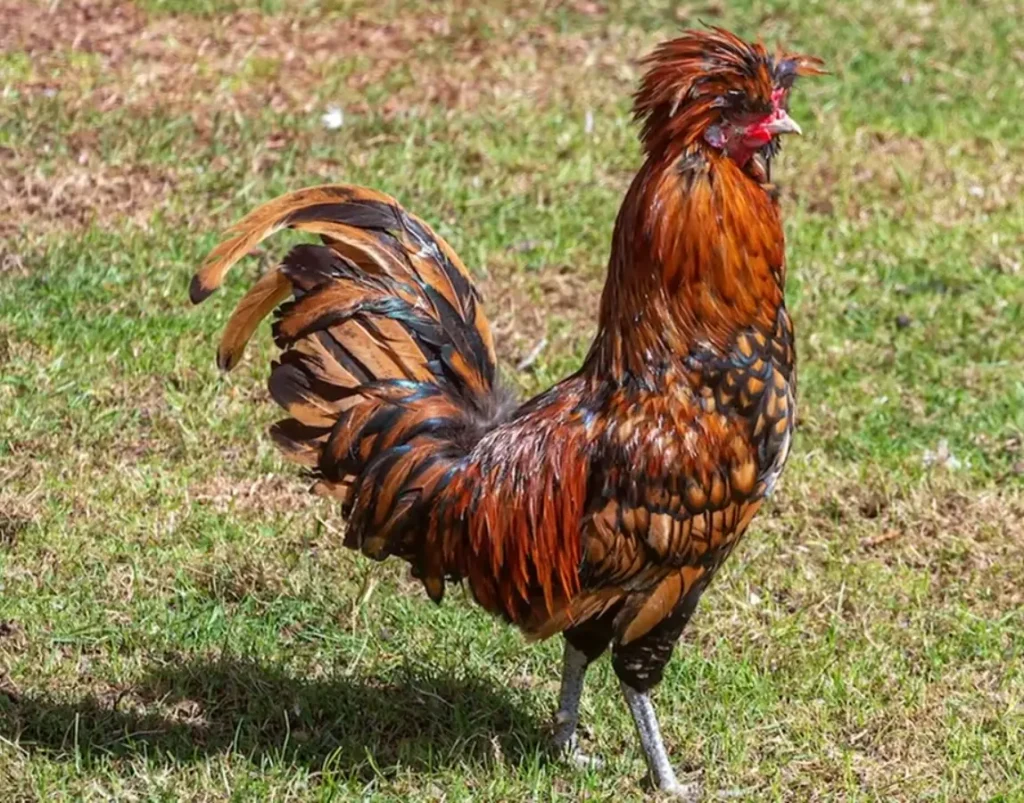
These chickens are not suited for cold weather, as their crests are prone to water collection and ice formation, which can make them feel cold. In icy weather, their crest feathers may even freeze, causing discomfort. Ensuring they are protected from extreme cold is essential for their well-being.
Housing
To properly care for Polish chickens, they should be housed in a well-ventilated, dry chicken coop to ensure their comfort and health. They require enough space to prevent them from damaging each other’s crests by picking, which can lead to issues like lice that can easily spread among the chickens.
During the day, they enjoy perching on branches and trees while scavenging for feed, but they must be kept in a shelter at night to protect them from predators and thieves. If you plan to keep them for laying eggs, it’s essential to ensure they are kept indoors at all times for safety and comfort.
Feeding
Feeding Polish chickens requires attention to their energy requirements, which change seasonally. During the warmer months, they tend to eat less, so it’s essential to make sure they receive the essential nutrients in their diet. In the colder months, chickens will eat more to generate body heat, which helps them stay warm.
For young, growing birds, a high-protein diet is necessary compared to mature chickens, ensuring they develop properly. You can provide complete feeding diets like crumbles, mash, or pellets in a feeder, and supplement them with grain or calcium for better growth and eggshell quality.
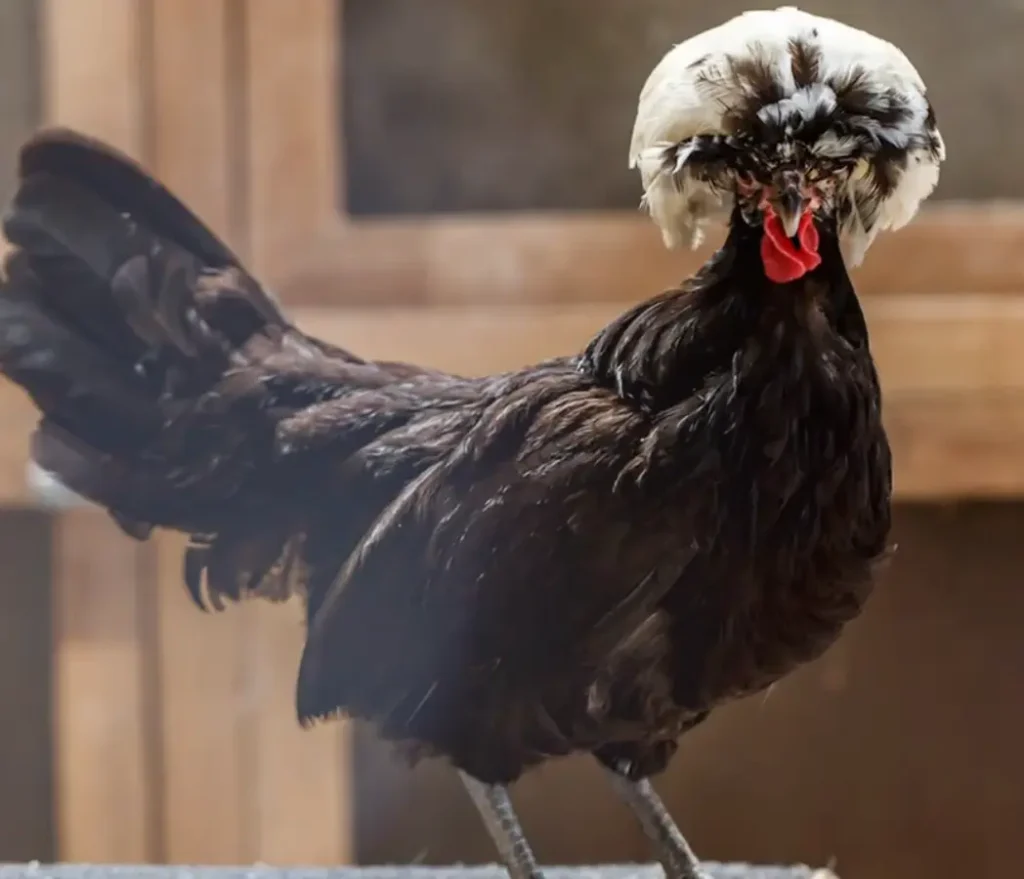
Additionally, chickens will naturally eat feathers and coarse materials along with their feed. To help them digest these materials, provide hard grit that they can consume, and it will be eliminated from their gizzards. For egg layers, you may need to add medicines like coccidiostats to prevent coccidiosis, an infection caused by the intestinal parasite coccidia that spreads through manure.
The signs of coccidiosis include diarrhea, dehydration, and pale, depressed, or thinner birds with ruffled feathers. Always ensure that fresh feed and clean water are available for them at all times in drinkers or tank water systems, placing multiple waterers around the enclosure so they can easily drink throughout the day.
Grooming
If you’re preparing your Polish chickens for a show, proper grooming is essential. Start by bathing them 3 to 5 days before the show to give them enough time to dry. Fill large tubs with warm water, adding shampoo, a quarter cup of vinegar, and conditioner to clean them thoroughly.
Gently hold the chicken with its breast in your palm and lower it into the tub, where most birds will relax and even fall asleep. After the bath, use towels or a blow dryer to dry the chicken. For grooming, trim the nails with a clipper, and use an emery board to smoothen both the nails and beak for a polished finish.
Eye and Crest Care
The crest of feathers on Polish chickens can sometimes partially or completely cover their eyes, making them more prone to injuries. It’s important to regularly check their eyes for any signs of redness, swelling, discharge, or other abnormalities. To keep the crest area in good condition, make sure it stays clean and free from debris.
Since feathered crests can easily collect dirt, moisture, and parasites, they can lead to health problems. Trimming the feathers around their eyes helps to prevent vision obstruction and reduce the risk of eye-related issues.
Protection from Predators
Polish chickens may be more vulnerable to predators due to their limited vision caused by the crest. To ensure their safety, provide them with a secure, predator-proof coop and run.
Personality and Social Traits of Polish Chickens
Personality
- Gentle and Docile: Polish chickens are typically gentle and docile, making them an excellent choice for families and backyard enthusiasts. They have a friendly disposition and are easy to handle, which makes them ideal for those seeking a calm and tame bird.
- Curious and Active: These chickens are naturally curious and active. They enjoy exploring their surroundings, foraging, and scratching around the yard, which makes them fun to interact with. Their active behavior adds a lively presence to any backyard.
- Skittish: Due to the limited vision caused by their crest of feathers covering their eyes, Polish chickens can be skittish and easily startled by sudden movements or loud noises, which might cause them to panic. They require a more secure and protected environment compared to other breeds.

Social
- Social and Non-Aggressive: Polish chickens are generally social birds and get along well with other chickens and other types of poultry. They are non-aggressive and don’t engage in behaviors like pecking or bullying, which makes them suitable for mixed flocks.
- Sensitive to Loneliness: These birds prefer being in a flock and might feel stressed or lonely if kept alone. They thrive in a social environment where they can interact with others and enjoy the company of fellow birds.
Vulnerability
Polish chickens are more vulnerable to predators due to their limited vision, especially because of their crest, which can partially obstruct their sight. They might not see predators approaching as easily as other chickens, which makes them more susceptible to danger.
To ensure their well-being, it’s essential to provide a safe and secure environment, such as a properly built coop and run where they are protected from potential threats.
High-Maintenance
Polish chickens require extra care due to their crest, which can easily get dirty and lead to health issues like eye infections if not properly managed. To avoid these problems, it is important to clean their feathers and keep the crest area free from debris.
Regularly cleaning their crest ensures they stay healthy and helps prevent any buildup of dirt or moisture that could cause discomfort or infection.
Egg Production and Brooding Habits
Egg Color
The egg color of Polish chickens can vary depending on the breed and variety. Most Polish chickens lay white eggs, but certain varieties might produce cream-colored eggs or even tinted eggs. The specific egg color a chicken lays is determined by the genetic makeup of the individual bird, meaning that even within the same breed, the eggs can look different.
Egg Production Rate
Polish chickens are not typically known for high egg production rates like other chicken breeds specifically bred for prolific egg-laying. Their primary focus, historically, has been on their ornamental qualities, which makes them more valued for their appearance than for their egg production.
As a result, they tend to have a moderate to low egg production rate, especially when compared to more egg-focused breeds.
What Is the Polish Chicken Lifespan?
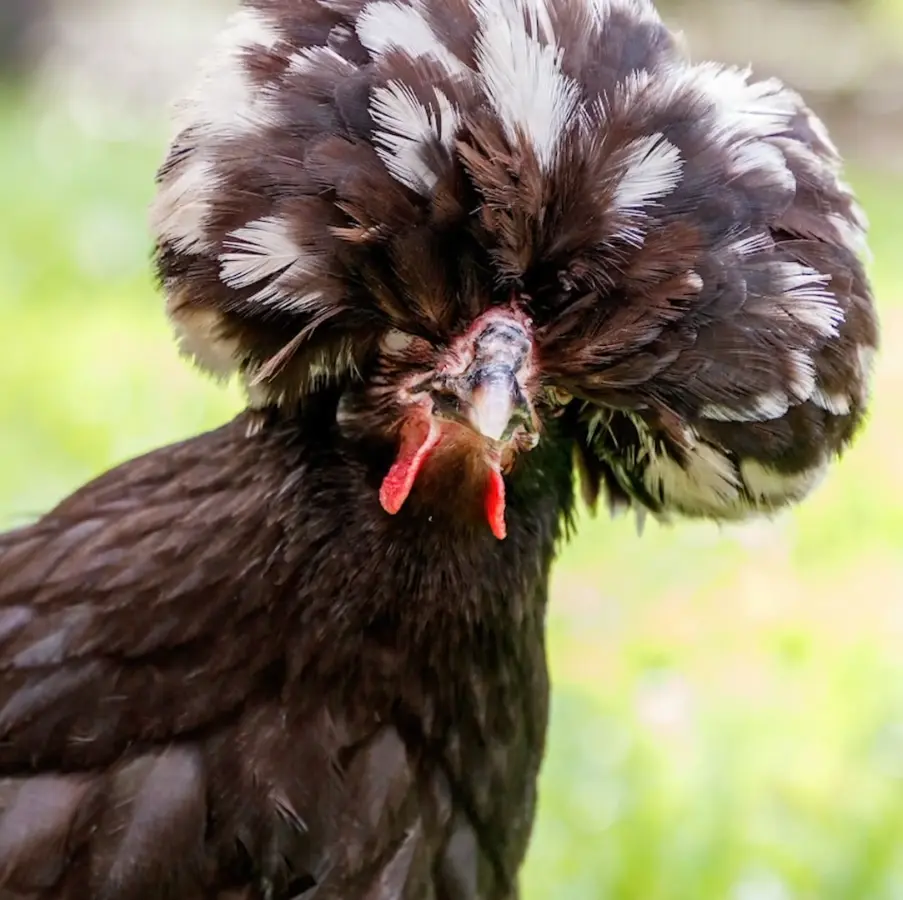
The average lifespan of Polish chickens is typically 7 to 8 years, similar to most chickens. Hens kept in backyard flocks can live for 6 to 8 years, with the ability to produce eggs for about 3 to 4 years.
However, egg production, size, and shell quality tend to decrease over time as the bird ages. So, while their lifespan is relatively long, their egg-laying ability decreases as they grow older.
Risks Associated with Polish Chickens
Polish chickens can carry infectious bacteria like Salmonella and Campylobacter in their intestines, which they can pass to other animals through their droppings. To avoid spreading these bacteria, it’s important to wash hands with soap and water after touching Polish chickens or anything associated with them.
You should also avoid touching your mouth with dirty hands. Children under age five should be kept away from the chickens, and it’s best to avoid eating or drinking where the birds are kept. Always clean the poultry feeders and drinkers outside to prevent contamination at home, and if you are using Polish chicken eggs, make sure to cook them thoroughly to avoid any infection.
Climate Preferences and Care for Polish Chickens
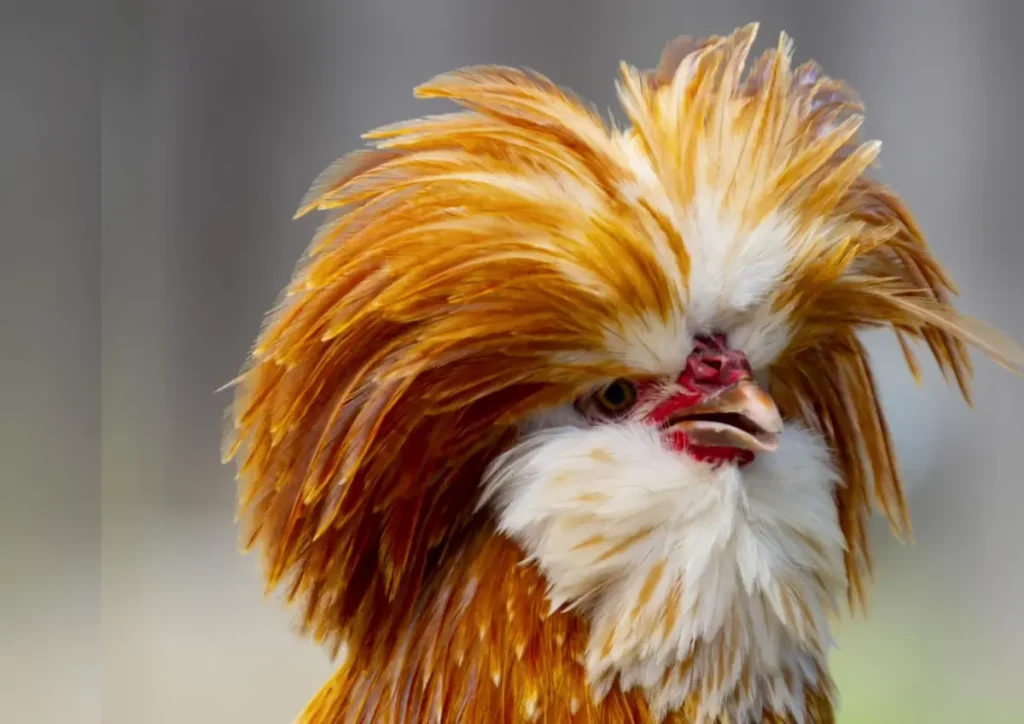
Polish chickens thrive in a dry, warm climate and are heat-tolerant as long as they have access to shade. They don’t do as well in cold weather, especially because their crests can become waterlogged, which may cause them to feel chilled.
In icy weather, the crest feathers can even get frozen, leading to further discomfort. To keep them comfortable, it’s important to house them in a well-ventilated, dry chicken coop to maintain a healthy environment.
Frequently Asked Questions
Are Polish Chickens Good Egg Layers?
Polish chickens lay 180-200 white eggs per year, with their first eggs appearing around 20 weeks. While not the most prolific egg layers, they shine in personality and are gentle, good with kids, and surprisingly good flyers.
What is Special About Polish Chickens?
Polish chickens are favored as show chickens due to their unusual characteristics and feathered crest on their head. Their name likely comes from the resemblance of their feather crest to Polish military hats, making them ideal for exhibition.
Are Polish Chickens Noisy?
Polish chickens can be louder than other breeds, but this isn’t an issue for many people. If your hens are in an urban or suburban setting, where neighbours might complain, it’s best to avoid breeds like Orpingtons and Poland (or Polish) chickens.
Are Polish Chickens Good for Meat?
Polish chickens are mainly ornamental birds, known to bring a smile with a simple glance. They are decent egg-layers and sometimes used as show birds, but they are not typically raised as meat birds, even though they can be eaten.
Conclusion:
Polish chickens are unique birds with striking ornamental features, particularly their feathered crest, making them popular as show chickens. While not known for high egg production, they excel in personality and are gentle, active, and surprisingly good flyers. These chickens have a rich history and are adored for their quirky nature, but they require extra care due to their crest and vulnerability to predators. Ideal for those seeking a visually captivating bird, they make wonderful pets and exhibition animals, though they may not be the best choice for meat production.

